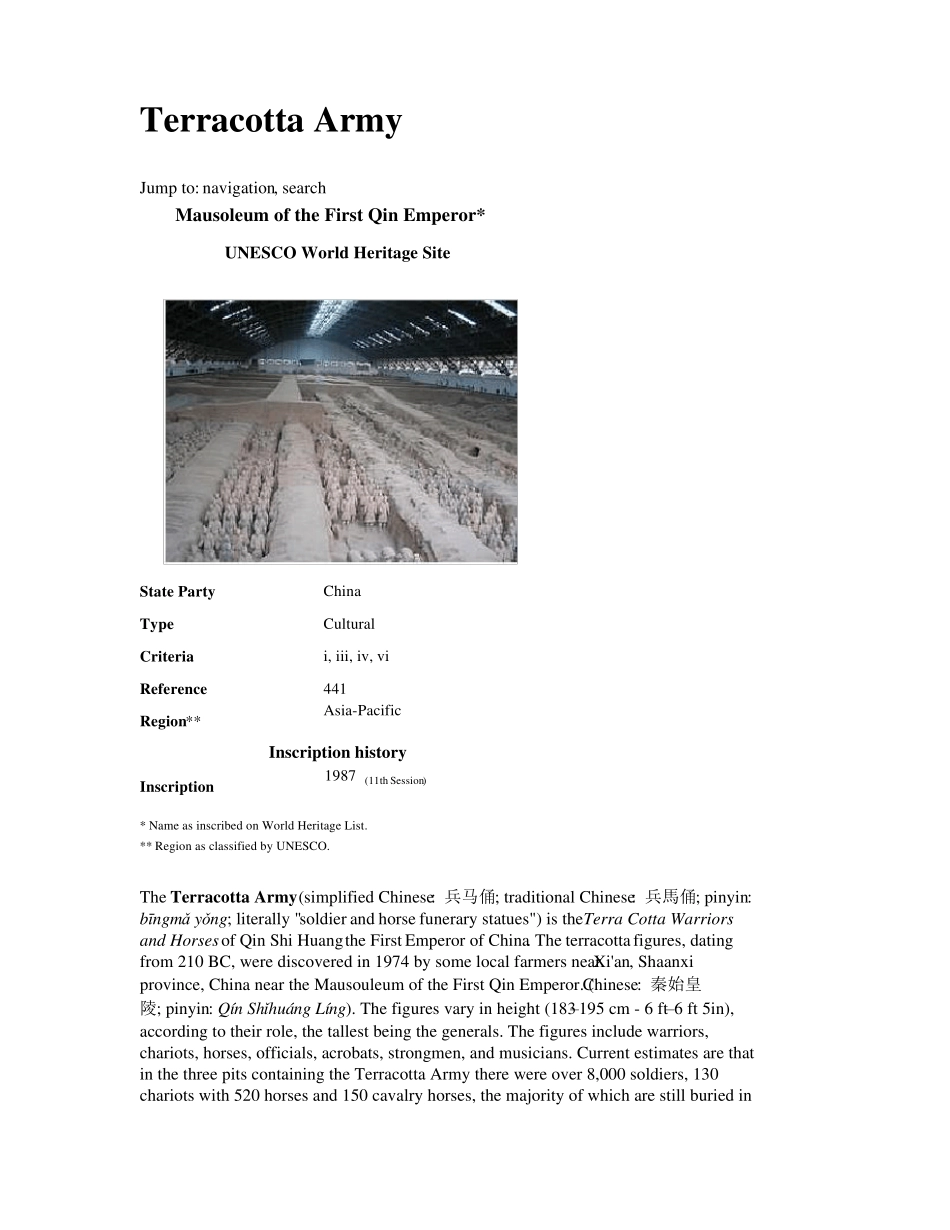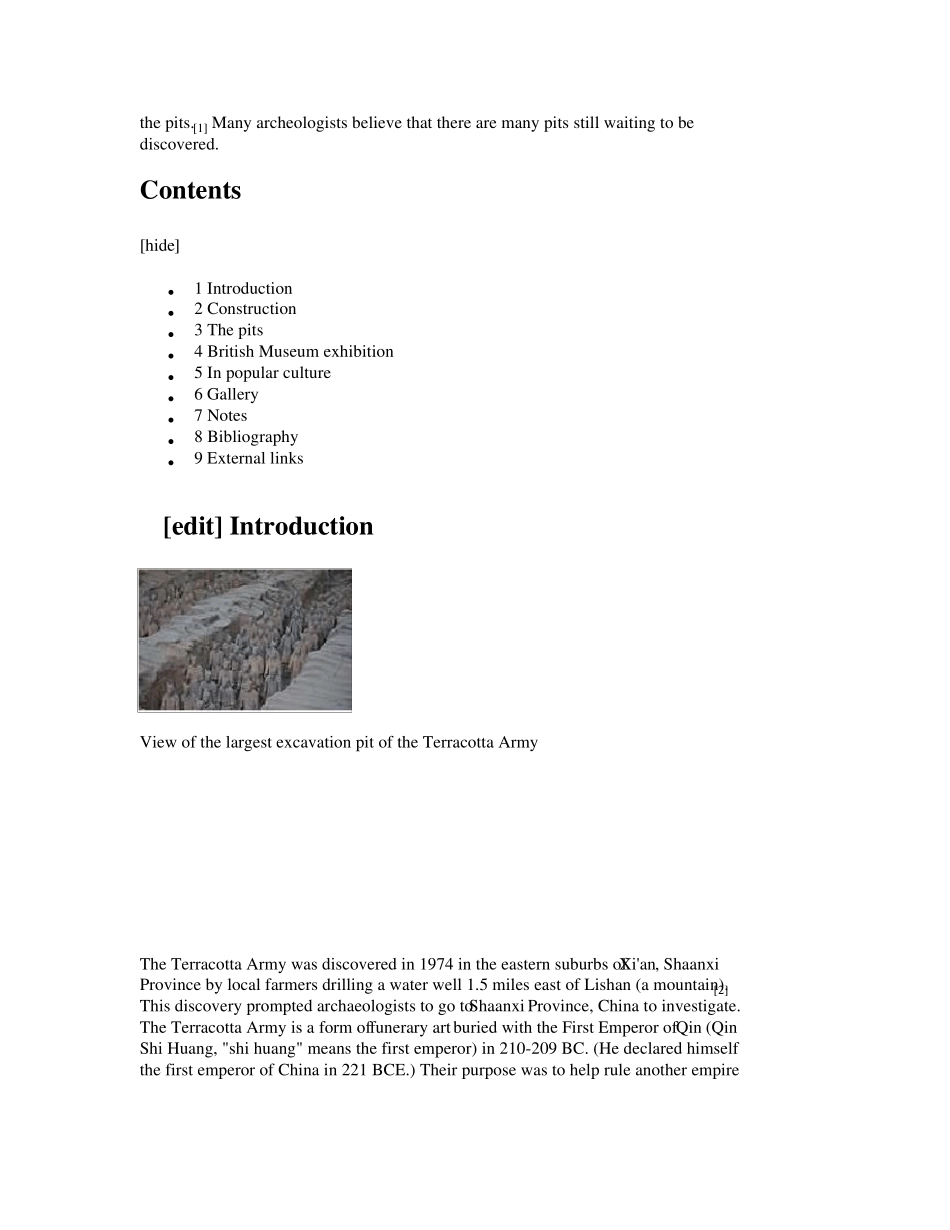Terracotta Army Jump to: navigation, search Mausoleum of the First Qin Emperor* UNESCO World Heritage Site State Party Type Criteria Reference Region** China Cultural i, iii, iv, vi 441 Asia-Pacific Inscription history Inscription 1987 (11th Session) * Name as inscribed on World Heritage List. ** Region as classified by UNESCO. The Terracotta Army (simplified Chinese: 兵马俑; traditional Chinese: 兵馬俑; pinyin: bīngmǎ yǒng; literally "soldier and horse funerary statues") is the Terra Cotta Warriors and Horses of Qin Shi Huang the First Emperor of China. The terracotta figures, dating from 210 BC, were discovered in 1974 by some local farmers near Xi'an, Shaanxi province, China near the Mausouleum of the First Qin Emperor. (Chinese: 秦始皇 陵; pinyin: Qín Shǐhuá ng Líng). The figures vary in height (183–195 cm - 6 ft–6 ft 5in), according to their role, the tallest being the generals. The figures include warriors, chariots, horses, officials, acrobats, strongmen, and musicians. Current estimates are that in the three pits containing the Terracotta Army there were over 8,000 soldiers, 130 chariots with 520 horses and 150 cavalry horses, the majority of which are still buried in the pits.[1] Many archeologists believe that there are many pits still waiting to be discovered. Contents [hide] • • • • • • • • • 1 Introduction 2 Construction 3 The pits 4 British Museum exhibition 5 In popular culture 6 Gallery 7 Notes 8 Bibliography 9 External links [edit] Introdu ction View of the largest excavation pit of the Terracotta Army The Terracotta Army was discovered in 1974 in the eastern suburbs of Xi'an, Shaanxi Province by local farmers drilling a water well 1.5 miles...


